One of the best ways to improve your swimming doesn’t involve water! Cross training on land, known as dryland training, can improve your endurance, prevent injuries, and make you faster in the pool. Plus, mixing up your routine keeps fitness exciting and helps avoid swimming burnout.
Where do you start? Asphalt Green Unified Aquatics (AGUA) Swim Team strength and conditioning coach Ian Cervone shares his favorite dryland exercises, touching on all of the muscles you use in the pool.
For the following exercises, if your goal is develop strength and power, use weights that allow you complete five to 12 repetitions. If your goal is to improve endurance, use lighter weights that allow you to complete 12 to 20 repetitions.
Pull-ups
Muscles targeted: Shoulders, back, and arms (latissimus dorsi, deltoid, trapezius, biceps)
How the exercise improves your swimming technique: The pull-up is a great indicator of upper-body strength. The muscles targeted are the same ones used to propel a swimmer forward from the catch position (when you pull your body through the water).
How to do it:
- Start hanging from a pull-up bar with arms extended.
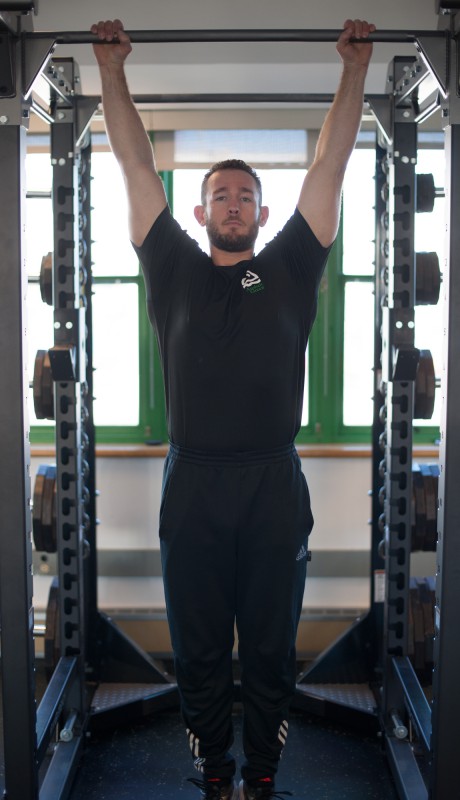
- Keeping the core engaged, pull yourself up until your chin passes the bar.

- Maintaining control, lower yourself down to starting position.
Modifications:
- Harder: Change your hand position to an overhand, underhand, or neutral grip (arms facing each other).
- Easier: Use a resistance band to support your body weight. Wrap the band around the pull-up bar so it forms a loop at the bottom. Place knees in the loop when you perform the exercise to support your weight.
Dumbbell bench press
Muscles targeted: Chest, shoulders, and arms (pectorals, deltoids, triceps)
How the exercise improves your swimming technique: This exercise strengthens the muscles involved in propelling yourself forward from the catch position.
How to do it:
- Start lying on a flat bench, feet planted firmly on the floor.
- Hold a dumbbell in each hand with weights sitting just outside your shoulders.
- Press the dumbbells toward the ceiling until your arms are straight.
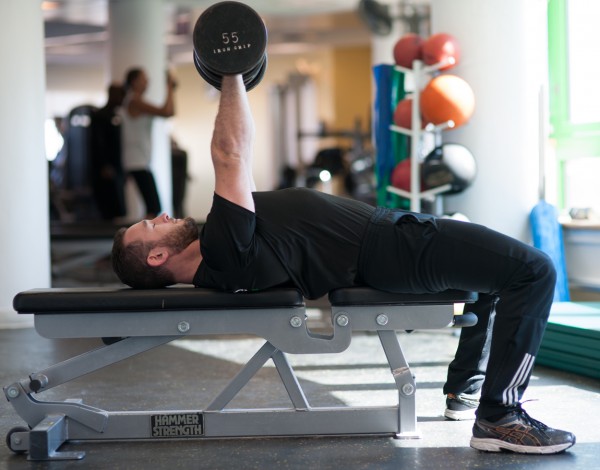
- Lower your arms to starting position.

Modifications:
- Harder: Change the position of your hands, so your palms are facing your legs or toward one another.
- Easier: Set up the bench so it is on an incline.
Cable face pulls
Muscles Targeted: Shoulders, back, and arms (posterior deltoid, trapezius, rhomboids, biceps)
How the exercise improves your swimming technique: Swimming involves repetitive movements. Using the same muscle groups can create imbalances, which may lead to an overuse injury. This exercise strengthens the lesser-used shoulder muscles, restoring balance in your shoulders.
How to do it:
- Using the pulley machine at a gym, grab the ends of the rope, and take a few steps back, so you are leaning backward slightly and looking up at the pulley.
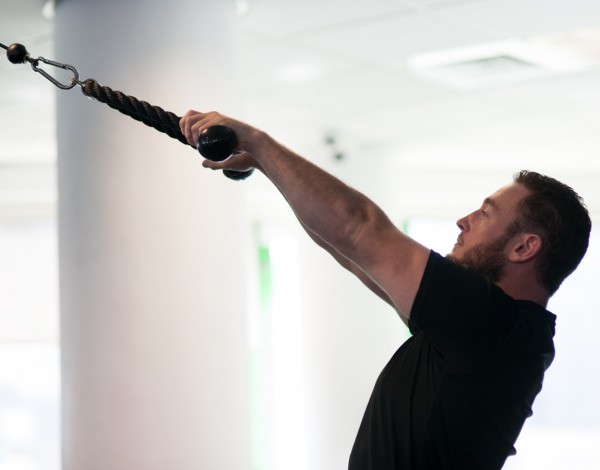
- Keeping your elbows up, pull the rope back, toward the top of your head, pinching your shoulder blades together.
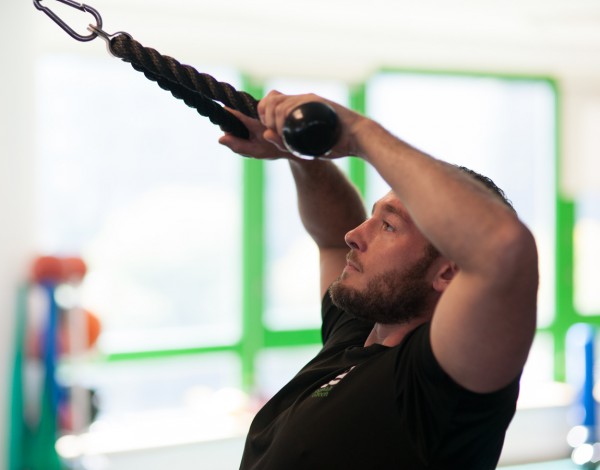
- Remaining in control, return the rope to starting position.
Modifications:
- Harder: Pull more weight.
- Easier: Use a resistance band instead of cables.
Barbell squats
Muscles targeted: Legs and butt (hamstrings, quadriceps, glutes)
How the exercise improves your swimming technique: This exercise strengthens the muscles used to spring off the starting blocks, push off the wall, and give your kick power.
How to do it:
- Step under the bar at the weight rack, placing it across the back of your shoulders.
- Step backward, walking the bar away from rack.
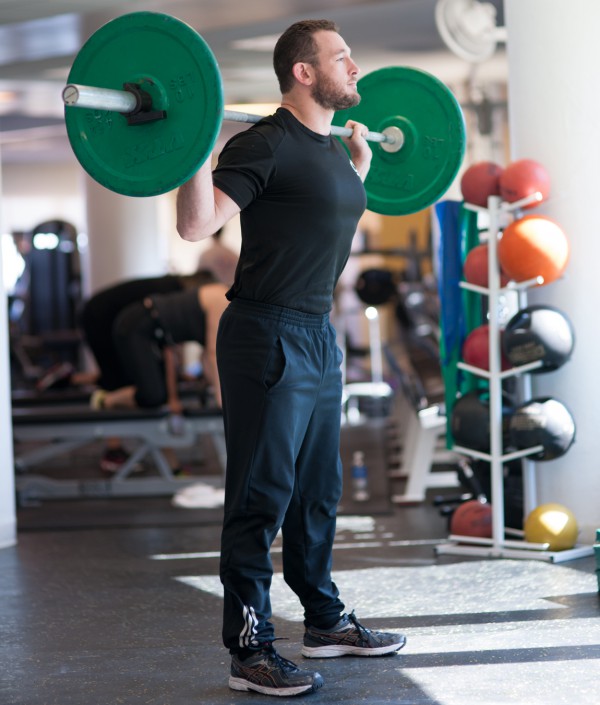
- Keeping your back straight and heels planted firmly on the floor, squat at your hips, pushing them back as if sitting onto a chair.

- Keeping your hips and knees at the same height, stand to return to starting position.
Modifications:
- Harder: Squat onto a box.
- Easier: Use a lighter dumbbell or kettlebell instead of a barbell.
Kettlebell swing
Muscles targeted: Butt, legs, back, shoulders, forearms (glutes, hamstrings, erector spinae, anterior deltoid)
How the exercise improves your swimming technique: Kettlebell swings improve overall strength, helping you spring off the starting blocks and push out of turns. They also work the muscles around the spine, allowing you maintain a straight, streamlined position in the water.
How to do it:
- Start in standing position, feet wider than your shoulders, arms hanging down, gripping a kettlebell with both hands.
- Hinge at the hip, and swing the kettlebell back, through your legs.

- Quickly contract your glutes and stand up tall, swinging the kettlebell in front of you until it is at eye level.

- Swing kettlebell back through your legs to starting position.
Modifications:
- Harder: Swing kettlebell with one arm.
- Easier: Use a lighter kettlebell.
Want more fit tips from our trainers? You will also like:

